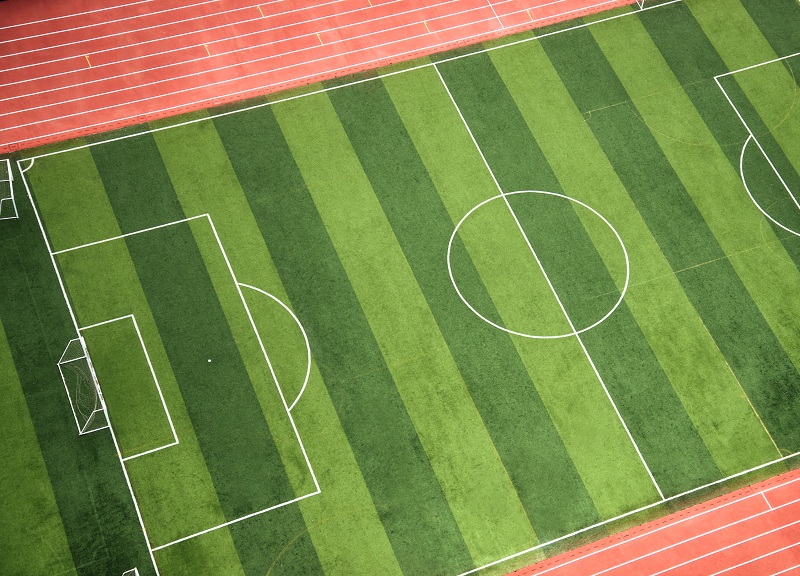The debate between natural grass and artificial turf for football fields has been ongoing for years, with athletes, coaches, and field managers offering differing perspectives. Each surface offers unique benefits and drawbacks, influencing player performance, safety, maintenance costs, and environmental impact. In this article, we explore the pros and cons of both surfaces to help determine which is better suited for football fields.

1. Natural Grass: The Traditional Choice
Pros of Natural Grass
Natural grass has been the go-to surface for football fields for decades, providing a soft and natural playing experience. Many athletes prefer grass because it is:
Softer Landing Surface: Grass fields tend to cushion falls, reducing the impact on players’ joints and muscles. This can lower the risk of serious injuries like concussions.
Cooling Effect: Grass remains cooler than artificial turf, especially in hot climates. This cooling effect can improve player comfort and reduce the risk of heat exhaustion.
Aesthetic Appeal: A well-maintained grass field can be visually pleasing, offering a lush and professional look.
Cons of Natural Grass
While grass fields are favored for their traditional feel, they come with several challenges:
Maintenance Intensive: Grass requires regular watering, mowing, fertilizing, and repairs to maintain its quality. These upkeep costs can be high, particularly in areas prone to drought.
Weather Impact: Grass fields are highly susceptible to weather conditions. Rain can turn the field into mud, leading to poor playability and increased risk of injury, while prolonged dry periods can cause the surface to become patchy.
Durability Issues: Heavy usage can quickly wear down natural grass, making it harder to maintain a consistent playing surface throughout a long season.
2. artificial turf: The Modern Solution
Pros of artificial turf
Artificial turf has grown in popularity due to its durability and low maintenance. Key advantages include:
Low Maintenance: Turf does not require watering, mowing, or fertilizing. This leads to significant cost savings in terms of maintenance staff, equipment, and water usage.
All-Weather Playability: Turf is not affected by rain or extreme heat, providing consistent playability regardless of the weather. This makes it ideal for regions with unpredictable climates.
Durability: Turf can withstand heavy foot traffic without showing signs of wear, making it suitable for fields that are used frequently for games and practice.
Cons of Artificial Turf
Despite its advantages, artificial turf comes with several drawbacks:
Injury Risk: Some studies suggest that players may be at higher risk for certain injuries, such as ACL tears, when playing on turf compared to grass. The surface is less forgiving on joints and muscles due to its harder texture.
Heat Retention: Turf can become extremely hot in direct sunlight, with surface temperatures sometimes exceeding 120°F. This poses a risk for heat-related illnesses during games or practices.
Environmental Concerns: Turf fields are made from synthetic materials, and while they reduce water usage, they contribute to plastic waste when replaced. Additionally, they can increase water runoff, which may contribute to urban heat island effects.
In any event, whether it is for a professional league or school use, the option usually turns into a matter of maintaining tradition and at the same time being practical. With their specific pros and cons, using both may probably be the best solution based on the requirements of the field, cost, and place.

 Mobile Phone:
Mobile Phone: Wechart:
Wechart: Contact Now
Contact Now